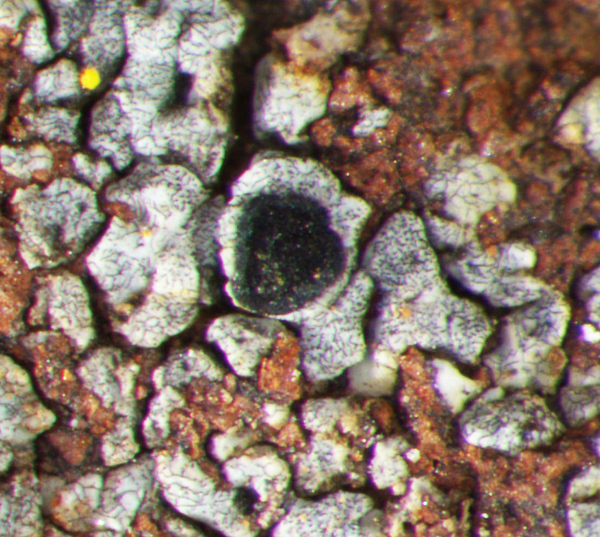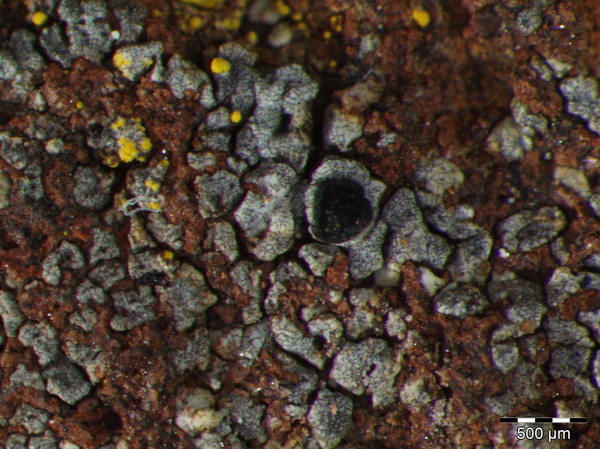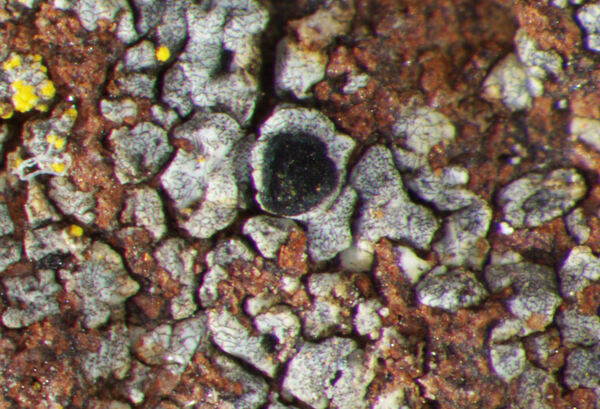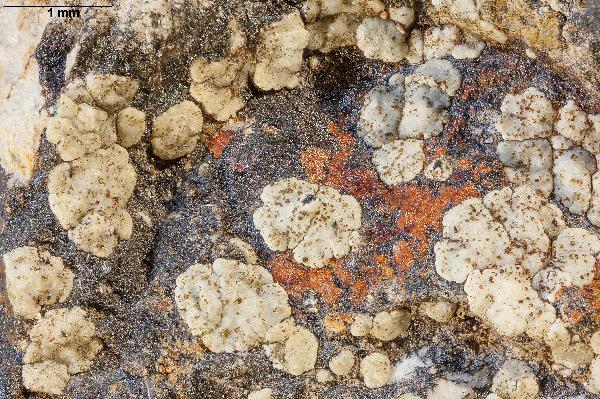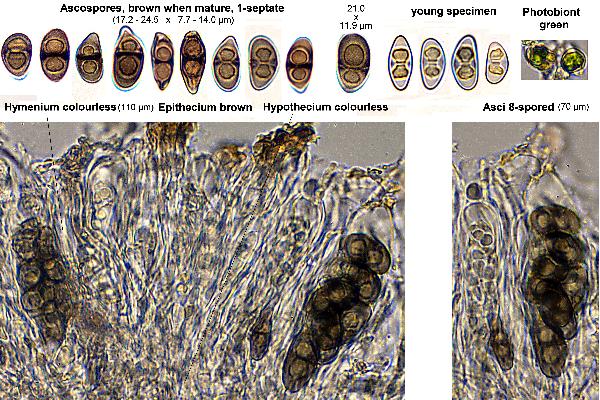Rinodina beccariana var. lavicola (J. Steiner) Matzer & H. Mayrhofer
in Mayrhofer & al., Nova Hedwigia, 57: 292, 1993. Basionym: Rinodina lavicola J. Steiner - Österr. bot. Z., 54: 361, 1904.
Synonyms: Rinodina subglaucescens var. lavicola (J. Steiner) H. Mayrhofer
Distribution: C - Sar (Mayrhofer & al. 1993). S - Si (Mayrhofer & al. 1993).
Description: Thallus crustose, episubstratic, up to 0.3 mm thick, continuous to rimose-areolate, pale to dark grey (turning brownish in the herbarium). Apothecia cryptolecanorine to lecideine, semi-immersed to sessile, 0.5-1 mm across, with a flat to slightly convex, dark brown to black disc, a thin, entire to crenulate, soon excluded thalline margin, and a persistent, black proper margin. Proper exciple dark brown, olivaceous or bluish green and N+ red; epithecium reddish brown, olivaceous or sometimes with a bluish green hue and N+ faintly reddish; hymenium colourless to olivaceous, 70-100 μm high; paraphyses branched in upper part, 1-2 µm thick at mid-level, the apical cells 4-6 µm wide, with a dark cap; hypothecium colourless, up to 200 μm high. Asci 8-spored, clavate, the K/I+ blue tholus penetrated by a faintly amyloid apical cushion with parallel or diverging flanks, the wall K/I-, surrounded by a K/I+ blue outer layer, Lecanora-type. Ascospores 1-septate, brown, ellipsoid, 14-24(-25) x (7-)8-12(-14) μm, Pachysporaria-type, with thick walls and rounded lumina, when young showing tendencies towards the Physcia-type, the wall warted, the tholus well-developed, the ontogeny of type A (apical wall thickening after septum formation). Pycnidia black, immersed. Conidia bacilliform, 4-5 x 1-1.5 μm. Photobiont chlorococcoid. Spot tests: thallus K+ yellow, C-, KC-, P- or P+ faintly yellow. Chemistry: atranorin, sometimes also chloroatranorin and zeorin. Note: a Mediterranean-Macaronesian lichen of volcanic rocks, known from the Canary Islands, Madeira, Azores and the Mediterranean area; a well-distinguished variety, somehow less photo- and hygrophytic than the typical one.
Growth form: Crustose
Substrata: rocks
Photobiont: green algae other than Trentepohlia
Reproductive strategy: mainly sexual
Commonnes-rarity: (info)
Alpine belt: absent
Subalpine belt: absent
Oromediterranean belt: absent
Montane belt: absent
Submediterranean belt: absent
Padanian area: absent
Humid submediterranean belt: absent
Humid mediterranean belt: rare
Dry mediterranean belt: very rare

Predictive model

Ulrich Kirschbaum CC BY-SA 4.0 - Source: https://www.thm.de/lse/ulrich-kirschbaum/flechtenbilder
Canary Islands; La Gomera-NNW; se of Vallehermoso; nw of El Tion; near Garabato. (Ident. V. Wirth).
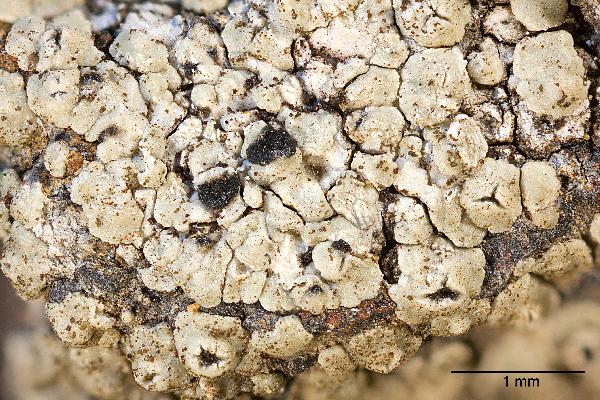
Ulrich Kirschbaum CC BY-SA 4.0 - Source: https://www.thm.de/lse/ulrich-kirschbaum/flechtenbilder
Canary Islands; La Gomera-NNW; se of Vallehermoso; nw of El Tion; near Garabato. (Ident. V. Wirth).
Growth form: Crustose
Substrata: rocks
Photobiont: green algae other than Trentepohlia
Reproductive strategy: mainly sexual
Commonnes-rarity: (info)
Alpine belt: absent
Subalpine belt: absent
Oromediterranean belt: absent
Montane belt: absent
Submediterranean belt: absent
Padanian area: absent
Humid submediterranean belt: absent
Humid mediterranean belt: rare
Dry mediterranean belt: very rare

Predictive model

Ulrich Kirschbaum CC BY-SA 4.0 - Source: https://www.thm.de/lse/ulrich-kirschbaum/flechtenbilder
Canary Islands; La Gomera-NNW; se of Vallehermoso; nw of El Tion; near Garabato. (Ident. V. Wirth).

 Index Fungorum
Index Fungorum
 GBIF
GBIF
